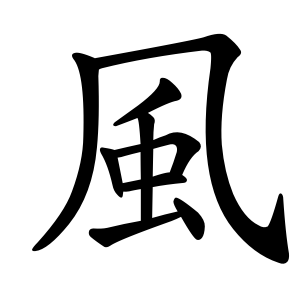風
- wind;
Etymology
Originally, 風 (풍) was written as 鳳, which referred to the phoenix (봉황). Over time, however, the meaning "wind" came to be associated with this character.
Eventually, the concept of wind split off and became represented by its own distinct character: 風.
In the classic dictionary Shuowen Jiezi (説文解字 shuōwén jiězì), based on seal script, the character was analyzed as having: 虫 (벌레 훼) as the semantic component, and 凡 (무릇 범) as the phonetic component (성부).
It interpreted the character to mean:
“When the wind blows and causes movement, insects arise. Insects transform and take form after eight days.”
This explanation is now understood to be a misinterpretation of the character’s true etymology.
Usage in Korean
It represents not only wind in the literal sense, but also appears in words such as:
風俗 (풍속) – customs, social traditions
風景 (풍경) – scenery, landscape
Thus, the character can extend to meanings related to atmosphere, style, or natural surroundings depending on context.
Characters with 風
Words that derived from 風
- 竹弓竹中戈 (HNHLI)
- 竹弓一中戈 (HNMLI)
- ⿵ 𠘨 䖝
